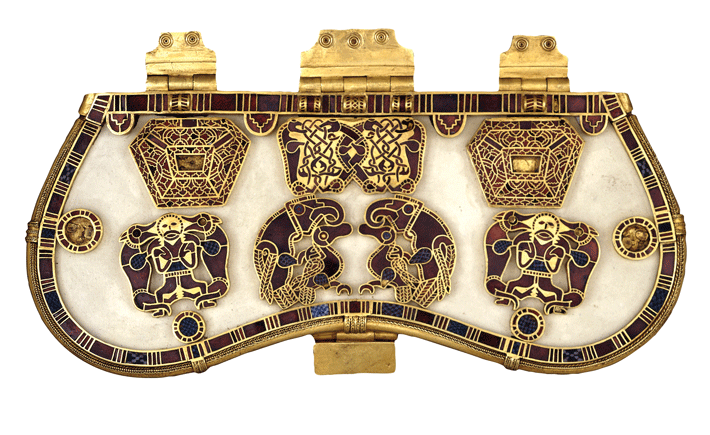Written by the TreasureGuide for the exclusive use of the Treasure Beaches Report.
A 3-year-old girl who was walking with her family along a trail in Israel unexpectedly found a piece of history: a 3,800-year-old scarab amulet...
Archaeologists later determined that it was a Canaanite scarab from the Middle Bronze Age. According to ancient texts, Canaan included parts of modern-day Israel, the Palestinian territories, Lebanon, Syria and Jordan.
"Scarabs were used in this period as seals and as amulets," Daphna Ben-Tor, an expert in ancient amulets and seals at The Israel Museum, said in a statement. "They were found in graves, in public buildings and in private homes. Sometimes they bear symbols and messages, that reflect religious beliefs or status."...
Here is the link for more about that.3-year-old picks up 'beautiful stone,' discovers 3,800-year-old scarab amulet in Israel
----
In a previous post I tested out some readily available free AI models and, as I reported, got some incorrect information. My tests weren't extensive but pointed out something to be aware of. A LiveScience article reports that one group of researchers found that AI systems will lie when pressured. You can read that for yourself, but here is an excerpt from that article.
..."Surprisingly, while most frontier LLMs [a term for the most cutting-edge models] obtain high scores on truthfulness benchmarks, we find a substantial propensity in frontier LLMs to lie when pressured to do so, resulting in low honesty scores on our benchmark," the scientists said in the study.
It points out that while more competent models may score higher on accuracy tests, this may be attributable to having a broader base of factual coverage to draw from — not necessarily because they’re less likely to make dishonest statements....
And here is that link for the rest of the article.AI models will lie to you to achieve their goals — and it doesn't take much | Live Science
There is a lot of information floating around on the internet these days and a lot of it is actually noise rather than information, making discernment critical.
From my brief informal tests of the AI systems I explored, it seemed they were too eager to please. I got the feeling they were too much like the human internet hucksters vying to get your attention (or clicks). This study seems to support my feeling that AI systems may not be extremely trustworthy, and the users should be aware of that. Of course, you might say the same thing of the information presented on radio, TV, or in books or magazines.
This same AI systems can still be useful, but to repeat, discernment is necessary just like with any other research resource. I always recommend additional research and testing things out for yourself.
---
 |
The Sutton Hoo ship burial contained some of the finest examples of Anglo-Saxon metalworking ever unearthed, including this gold, enamel, and glass purse. (© The Trustees of the British Museum/Art Resource) |
The small English village of Rendlesham, Suffolk, sits just four miles upriver to the northeast of the famed Anglo-Saxon royal burial site of Sutton Hoo. Portions of the modern village and its fields had long attracted the notice of archaeologists, and had been investigated during the nineteenth century, in the 1940s, and as recently as 1982. Evidence from these studies, though relatively scant, established that it had been an Anglo-Saxon settlement, but not necessarily with a royal connection. Then, in 2008, a Rendlesham landowner notified authorities that “nighthawks”—metal detectorists who raid archaeological sites in darkness, searching out illicit treasure—had been scouring his fields.
The renewed attention brought by the looters enabled the Suffolk County Council Archaeological Service, working with the landowner and volunteer metal detectorists, to conduct a survey, led by archaeologist Jude Plouviez, to evaluate damage and reassess the site’s archaeological potential. Now, some six years later, the investigation is ongoing, and the fields of Rendlesham are helping to fill in our knowledge of the kingdom that the Anglo-Saxon royals of Sutton Hoo once presided over. While the magnificent burials, which date from the sixth and seventh centuries, bring to mind romantic images of warriors such as Beowulf, recent archaeological fieldwork is providing scholars with a new and fuller view of Anglo-Saxon life...
Here is the link for the rest of that article.
Features - The Ongoing Saga of Sutton Hoo - Archaeology Magazine - November/December 2014
---
I started on another topic for this post, but it got longer and more complex than I expected, so I decided to pull it and hope to finish it and post it some other day.
Good hunting,
TreasureGuide@comcast.net
